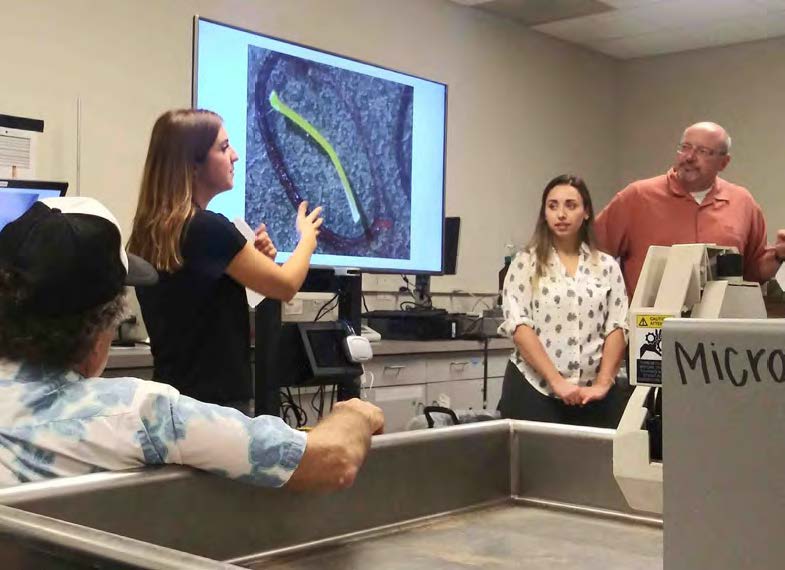International study kicks off to standardize microplastics monitoring methods

SCCWRP and its partners have launched an international study to develop standardized methods for measuring microplastic particles in aquatic environments, an effort that has the potential to improve the accuracy and comparability of microplastics monitoring programs worldwide.
The study, which kicked off in October, will examine precision, repeatability, cost and other issues associated with five commonly used methods for measuring microplastics in aquatic environments: Raman spectroscopy, Fourier-transform infrared spectroscopy (FTIR), stereoscopy, stereoscopy with staining, and Pyrolysis-GCMS (gas chromatography/mass spectrometry).
About 30 research laboratories around the world have signed onto the study, including SCCWRP member agencies.
The microplastics measurement methods evaluation study will help SCCWRP member agencies address California legislation enacted last year that calls for microplastics to be tracked in drinking water and the coastal ocean. California Senate Bill 1422 requires the State Water Board to develop plans to quantify microplastics in drinking water by 2021, while California Senate Bill 1263 requires the California Ocean Protection Council to adopt and implement a statewide strategy to evaluate the ecological risks of microplastics in marine environments.
SCCWRP will serve as key facilitator during the study, including hosting multiple on-site training sessions to teach study participants how to quantify microplastic particles.
During a two-day training workshop at SCCWRP in October, more than 20 participating labs learned how to extract plastics from water, sediment and fish tissue. Then, during a weeklong SCCWRP workshop starting November 18, participants will learn how to differentiate plastics from non-plastics using Raman spectroscopy and FTIR.
Trainers for the courses include study partners from the laboratory of Dr. Chelsea Rochman at the University of Toronto and instrument manufacturers Horiba and Thermo Scientific.
Method standardization is needed to measure microplastics because the particles can be difficult to distinguish from plant detritus and cloth fibers using light microscopy alone. Although a range of methods have been used, side-by-side evaluations have never been done to compare their relative effectiveness.
Defined as plastic particles between 1 micron and 5 millimeters in diameter, microplastics have become ubiquitous in aquatic environments, even as scientists have relatively little understanding of how they impact the health of humans and wildlife that inadvertently ingest them.
In preparation for the study, SCCWRP has completed a renovation of its chemistry instrument laboratory to house a state-of-the-art Raman spectrometer and a Fourier-transform infrared (FTIR) instrument. The renovation included an upgraded laboratory air circulation system, with HEPA (High Efficiency Particulate Air) filtration and positive pressure to exclude outside air that could be filled with airborne microplastics, including from clothing or other consumer products. These upgrades will minimize particulate contamination during sample processing and analysis.
The full method evaluation study is scheduled to start in December, following the training.
For more information, contact Dr. Charles Wong.
More news related to: Emerging Contaminants, Top News, Trash Pollution